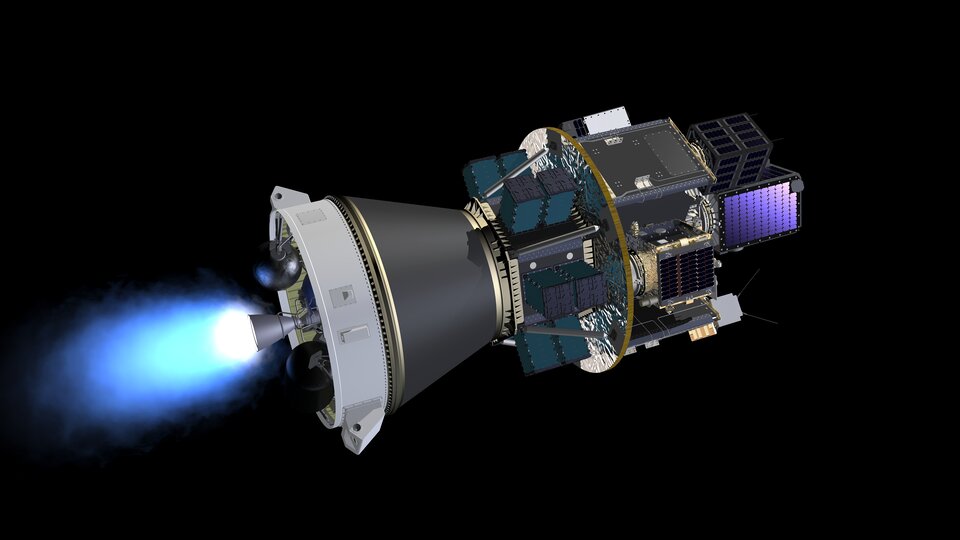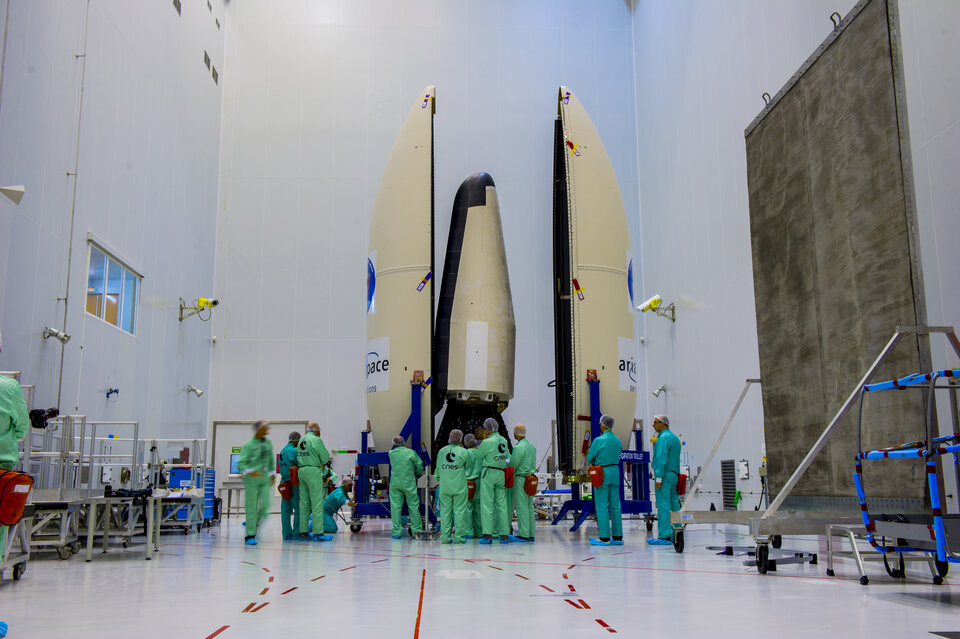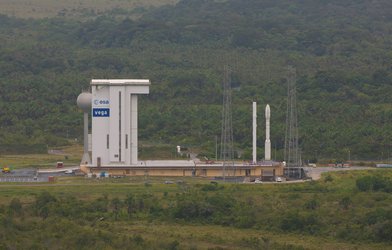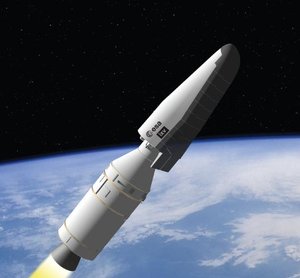Vega capabilities
Vega demonstrates a wide range of capabilities to meet the needs of a competitive launch market.
Multiple payload configuration

Vega is able to lift a target 1 500 kg of payload to a 700 km-altitude circular orbit and is versatile enough to accommodate a wide range of cargo configurations.
Inside its fairing at the top of the rocket, Vega can secure anything from a single large satellite down to dozens of small satellites – and deliver them into different orbits on any mission. Vega’s ‘Vespa’ payload adaptor and the ‘SSMS’ dispenser make this possible.
The VEga Secondary Payload Adapter, Vespa, can carry a 1000 kg main satellite on top, and either a secondary payload of 600 kg in the internal cone, or several auxiliary payloads totalling 600 kg distributed on a platform.
The Small Spacecraft Mission Service, or SSMS, meets the need for routine and affordable access to space for small and light satellites. This light modular dispensercan accommodate any combination of 1 kg CubeSats up to 500 kg minisatellites, from a main large satellite with smaller companions, to multiple small satellites, or dozens of individual CubeSats.

The SSMS dispenser can be assembled very close to the launch date providing utmost flexibility. Maximising the number of satellites on each Vega mission lowers the cost per ridesharing customer.
On reaching space, Vega’s upper stage performs a complex multiple firing strategy to ensure that the satellites are released into their planned orbits.
Using the Vespa, this multi-orbit capability was first demonstrated in May 2013 on Vega’s second Verta flight (VV02) when two satellites were delivered into two different orbits involving a change in inclination.
The SSMS demonstrated on 2 September 2020 the progressive coordinated release of 53 satellites into two separate Sun-synchronous orbits.
Wide range of orbits
The core of Vega’s market requires Vega to head north into a polar or Sun-synchronous orbit – typically for small- to medium-sized Earth observation satellites.
Vega has also delivered into an elliptical orbit: ESA’s LISA Pathfinder scientific satellite began its journey towards a Lagrange Point.

On its fourth flight (VV04), for the first time Vega headed eastwards to release ESA’s experimental IXV spaceplane into a suborbital path reaching all the way to the Pacific Ocean. IXV demonstrated autonomous European reentry capability for future space transportation.
Launching into an equatorial orbit enabled Vega to carry the maximum payload capacity of 2 tonnes while this vehicle is benchmarked to haul 1.7 tonnes into a 700 km-high polar orbit.
Mitigating space debris
To remain fully compliant with space debris regulations to help keep space clean, Vega’s upper stage performs a final burn in order to deorbit and burn up high in the atmosphere over the ocean.









